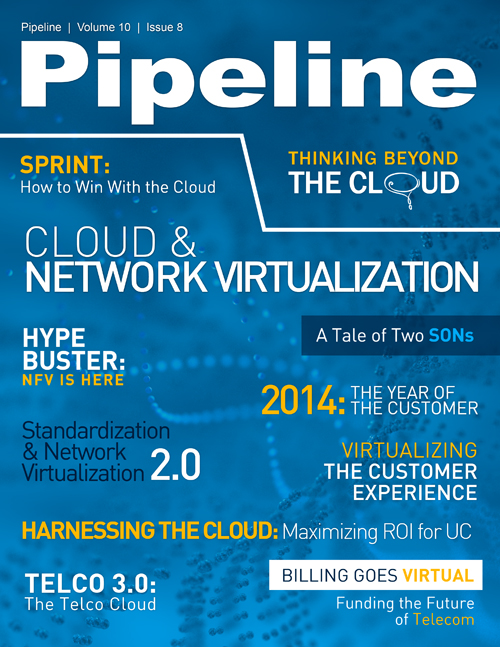LTE, Virtualization and the Customer
SDN
In addition to the control and service core function, NSN also virtualizes the core user plane functions. The separation of the control and forwarding function allows each to be scaled independently. This helps operators to make the best use of resources by the dynamic allocation of physical resources according to different demands.
Full separation of the control and the forwarding function allows for additional service chaining. A conventional gateway does more than simply route packets. It also provides functions that include tunnel termination, deep packet inspection, network address translation and ciphering. To lower costs and reduce latency, virtualization allows these functions to be applied to each data stream only as required.
VoLTE and TD-LTE
Over the past few years, voice over LTE (VoLTE) has been a little like the electric car was for a long time: promising technology that has taken significant time to realize, and with some doubts lingering as to its superiority over other options. Nevertheless, 2014 stands to be a significant turning point in VoLTE adoption. We’ve seen LTE networks becoming mainstream in 2013, with the development of standards and expansion of coverage that will make mass deployment of VoLTE possible.
Over the next year the promise will begin to be realized. Carriers will be able to transition from their older networks designed primarily for voice to new data-centric networks. They will be able to offer improved quality and higher data speeds to their customers, as well as new functionality that will prove to be disruptive for those who lead the way in effective implementation. In particular, high-definition voice has the potential to enrich the customer experience, leading to more calls, longer calls and improved revenue for carriers.
TD-LTE, or time-division LTE, is a burgeoning technology for delivering high-quality services to customers while increasing the agility of provider networks. Key for carriers will be the ability to interface with either FDD (frequency division duplexing) or FD LTE technology, as telecom infrastructure providers deliver packages that maximize carrier flexibility with features such as seamlessly switching calls from LTE to legacy voice networks.
CEM
Another change waiting in the wings for telecom providers is the maturation of understanding how customer experience management, or CEM, capabilities can yield consistent and quantifiable business benefits to the operators. Mobile customers are particularly fickle, as shown by a survey published by NSN earlier this year. In fact, 40 percent of customers expressed a willingness to change providers for the prospect of better service. On the other hand, 28 percent of U.S. customers were also willing to spend extra for additional services, highlighting the importance of maximizing mobile offerings in 2014. The providers that can deliver better technology and an enhanced customer experience stand to make significant gains in the market.
In order to deliver a superior level of service in an industry where many customers see little distinction between providers, the data gathered by the carrier is crucial to understanding the users’ issues or needs and to address them effectively. Unfortunately, the ability to collect information from customers has grown much more quickly than the ability to analyze it. Collectively, this growing mass of information is referred to as Big Data.
Used correctly, Big Data can yield important insights into customer behavior and attitudes that can shape business decisions. However, instead of creating a single enormous repository and sorting through everything, a more achievable approach that will take off in 2014 is what NSN refers to as ‘Right Data.’ With a Right Data approach, software solutions can be used to link multiple sources of data that already exist or can easily be made available from the network, IT infrastructure and even from social media, and extract only the relevant insights using defined parameters. The result is smaller, more manageable information sets that are simpler, cheaper and far faster to analyze.
Get Ready for 2014
2014 promises to be an exciting year for the telecom industry as we anticipate the next stage for many of the technologies we’ve been talking about, making 2014 a year of evolutions. In conjunction with advances in LTE technology, implementation of cloud technologies will deliver agility to operators as they seek to match network capabilities to the massive, relentless growth in demand for mobile broadband data and, at the same time, glean more insights into the customer experience.



















